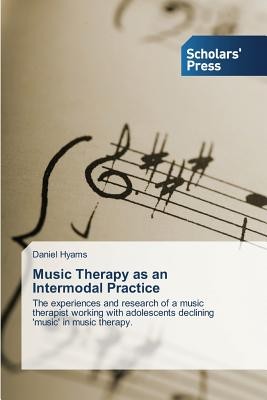
- We will send in 10–14 business days.
- Author: Hyams Daniel
- Publisher: Scholars' Press
- Year: 2014
- Pages: 120
- ISBN-10: 3639668146
- ISBN-13: 9783639668148
- Format: 15.2 x 22.9 x 0.7 cm, softcover
- Language: English
- SAVE -10% with code: EXTRA
Reviews
Description
What does a music therapist do when a client chooses not to engage using music? What does a music therapist do when a client engages in the therapeutic relationship, but self-elects to use other arts? How does a music therapist respond when allocated a multi-purpose room in a school setting, where various arts and play materials are on offer, in addition to musical instruments, and what are the expectations of the child client when the child associates the allocated room with 'play'? What if an educational professional refers a child to music therapy, but the child may not necessarily consider music as part of their recreational activities? As a music therapist, I have asked myself these questions because these became the reality of my working practice. Doctoral research explored the experiences and responses of adolescent clients in school settings using intermodal arts in music therapy with a music therapist. Further research examined the considerations of music therapists working in educational settings. This book follows the theories, practices and research of a music therapist who experienced changes in his profession in the post-global recession evolution of the field.
EXTRA 10 % discount with code: EXTRA
The promotion ends in 16d.17:15:21
The discount code is valid when purchasing from 10 €. Discounts do not stack.
- Author: Hyams Daniel
- Publisher: Scholars' Press
- Year: 2014
- Pages: 120
- ISBN-10: 3639668146
- ISBN-13: 9783639668148
- Format: 15.2 x 22.9 x 0.7 cm, softcover
- Language: English English
What does a music therapist do when a client chooses not to engage using music? What does a music therapist do when a client engages in the therapeutic relationship, but self-elects to use other arts? How does a music therapist respond when allocated a multi-purpose room in a school setting, where various arts and play materials are on offer, in addition to musical instruments, and what are the expectations of the child client when the child associates the allocated room with 'play'? What if an educational professional refers a child to music therapy, but the child may not necessarily consider music as part of their recreational activities? As a music therapist, I have asked myself these questions because these became the reality of my working practice. Doctoral research explored the experiences and responses of adolescent clients in school settings using intermodal arts in music therapy with a music therapist. Further research examined the considerations of music therapists working in educational settings. This book follows the theories, practices and research of a music therapist who experienced changes in his profession in the post-global recession evolution of the field.


Reviews